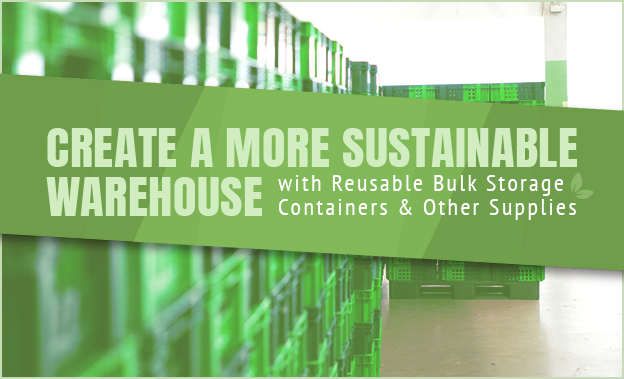 Warehousing is on the rise as more companies enter the logistics business. With increased competition, companies are doing everything they can to improve their warehousing operations and make themselves more attractive to prospective clients and business partners.
Warehousing is on the rise as more companies enter the logistics business. With increased competition, companies are doing everything they can to improve their warehousing operations and make themselves more attractive to prospective clients and business partners.
If you want to get ahead in the logistics industry, you can start by creating a more sustainable warehouse by limiting waste, reducing your energy costs and improving efficiency. You’ll save money on your operational expenses, so you can pass those savings along to your clients. From investing in reusable bulk storage containers to using energy-efficient lighting fixtures and appliances, you can become a leader in sustainable warehousing. Learn more about the benefits of making your warehouse more sustainable.
UNDERSTANDING SUSTAINABLE LOGISTICS
Climate change is affecting millions of lives all over the world. Carbon emissions are steadily increasing as companies burn fuel to meet the needs of their customers and move products from one location to the next. With more goods moving around the planet than ever before, consumers, business leaders and governments are starting to make the connection between the logistics industry and humanity’s effect on the environment.
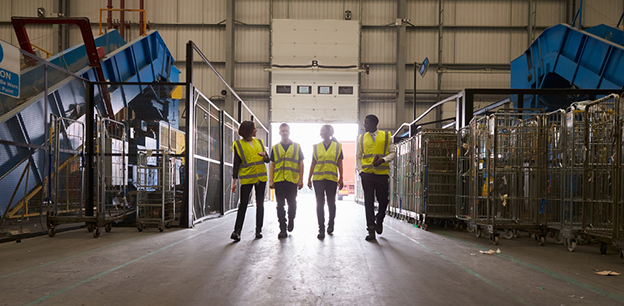
Sustainable logistics means reducing the logistics industry’s impact on the environment. This may include investing in renewable sources of fuel, reducing electricity and water usage or switching to reusable containers. All these changes make the logistics industry more sustainable as companies find more efficient ways of moving products and cargo around the planet. Considering the logistics industry is currently a $1.4 trillion industry and accounts for 7.5 percent of U.S. GDP, making this industry more sustainable will go a long way in terms of protecting the environment and limiting humanity’s contributions to climate change.
HOW TO MAKE YOUR WAREHOUSE MORE SUSTAINABLE
If you’re ready to make your warehouse more sustainable, there are several ways you can improve your operations. First, you’ll need to look at all the ways your warehouse impacts the local environment, including waste management, electricity and water usage, fuel consumption and supplies management. Once you have an idea of the aspects of your warehouse that need to be improved, you can start taking steps to reduce your effect on the environment.
Here are some of the most common ways to make your warehouse more sustainable:
Invest in Reusable Containers and Materials
The containers you use to move, store and ship products into and out of your warehouse say a lot about your business. Depending on the size and nature of your business, these containers could represent a large share of your overall operations, especially if you’re unpacking and repacking items day in and day out. For the sake of sustainability, try investing in reusable storage and shipping containers such as used pallets and plastic barrels. You can use these materials over and over again, so your warehouse won’t produce as much waste. You’ll save money by not having to purchase new supplies every time a new order comes your way.
 Start a Warehouse Recycling Program
Start a Warehouse Recycling Program
Even with switching to reusable containers, your warehouse is bound to produce some waste. But instead of dumping your garbage in a local landfill, try to recycle as many of these items as possible. If you make recycling a fundamental part of your business model by encouraging your employees to keep certain items out of the dumpster, you can reduce your waste management costs and leave less of a mark on the local environment. All you need is the right leadership and some giant blue plastic bins to get the ball rolling.
Switch to LED Lightbulbs
It might sound like a negligible change, but investing in more sustainable lighting fixtures can have a sizeable effect on your operations. LED lights are not only the most energy-efficient; they’re also better suited to your warehousing needs. They project light in just one direction, so you aren’t wasting precious energy lighting every nook and cranny of your warehouse. While incandescent light bulbs release around 90 percent of their energy as heat, LED bulbs are more efficient. They use nearly all their energy for lighting purposes, and they will last much longer than almost any other type of bulb. Over time, you’ll save money on your lighting and electricity costs, and you won’t have to swap out your light bulbs nearly as often.
Bank on Renewable Energy Sources
If you really want to limit your warehouse’s effect on the environment, you can switch to renewable fuel sources instead of depending on carbon-emitting fossil fuels. By investing in your own solar panels, you can generate your own electricity that you can use to power a portion of your warehouse — if not the whole thing. If you generate excess electricity, you may be able to sell it back to your local utility company for a profit.
You can either buy or rent your solar panels, with both options leading to massive energy savings and long-term sustainability. You can install these panels on the roof or on the ground, so long as they have access to the sun. With the right equipment and knowhow, your facility will eventually become what’s known as net-zero — which means you produce as much electricity as you consume, thus eliminating your effect on the environment all together.
Improve Machine Efficiency with Submetering
A new trend is taking the logistics and engineering world by storm. As companies look for ways to improve efficiency and reduce technical errors, many are investing in what’s known as submetering. This involves attaching a separate “sub” meter to every machine in your facility. The meter records important statistics such as electricity, water and gas usage. The meter then sends this information to your warehouse management software system or a third party that monitors this information on your behalf.
Using this technology, you can keep an eye out for ways to improve your operations. If a machine isn’t working properly, the submeter will be the first to know. You might see your electricity usage spike, which means you’ll need to have one of your machines serviced or replaced. This makes it easy to stay on top of mechanical operations that can deplete your facility’s resources.
Make Your Building More Energy-Efficient
Warehouses tend to be large, open spaces. It can cost a fortune to keep that kind of space at the perfect temperature, especially in the summer and winter. But you can reduce your HVAC costs by investing in low-speed fans and reinforcing the boundaries of your building. Seal holes and gaps in the foundation of your building that can let all that cold or hot air escape. You can also choose energy-efficient heating and cooling options that will help you save money in the long-run.
BENEFITS OF A SUSTAINABLE WAREHOUSE
There are so many reasons to make your warehouse more sustainable. If saving the environment isn’t enough to convince you to invest in sustainability, you can also look forward to lower operational costs, new marketing opportunities and higher employee satisfaction. Here are just some of the benefits of making your warehouse more sustainable.
Reduced Operational Costs
On a very simple level, investing in sustainability will help you reduce your overhead expenses. From limiting your fuel consumption to ordering fewer storage supplies, sustainability is a great way to save money and invest in a brighter future for your business. If you invest in solar energy, you won’t have to pay a fortune in utility bills month after month. With reusable storage supplies like used plastic barrels, you won’t have to spend as much money when it comes to storing certain goods and products at your facility.
Branded Sustainability
As governments, consumers and businesses put a greater emphasis on sustainability, you can use these trends to your advantage when marketing your company to the public. If you make your warehouse more efficient, you can start incorporating these efforts into your marketing strategy. Your company’s mission can include ideas like protecting and safeguarding the environment for future generations. You can include certain keywords like “green” and “sustainable” in your marketing materials that will help you make the right impression on consumers, business leaders and investors. You can also use these initiatives to get more press. Include your sustainability efforts in one of your press releases, and you could see the name of your business in local and national publications.
Improved Employee Morale
Some of your employees are bound to care about the environment, and forcing them to create unnecessary waste and use inefficient equipment that will pollute the local environment can inhibit their ability to do their job. Your employees will start to feel better about the work they do if they know that you’re doing everything you can to limit your company’s effect on the environment. Your employees will do their job with a greater sense of purpose knowing that they’re working for a company that shares their commitment to sustainability.
Increased Independence
When your warehouse depends on so many moving parts, you never know when your business might come to a screeching halt. If your local utility company experiences a blackout, your facility will lose power and you’ll have to delay your operations. If one of your suppliers fails to make a delivery, you’ll have to push back your delivery timeline. But you can gain your independence by investing in more sustainable business practices such as generating your own renewable fuel sources, reusing the same storage materials and submetering your equipment as a way of preventing costly delays.
Sustainability gives you more control over your business practices. You won’t be as dependent on third-party companies and service providers. Your facility won’t be as negatively impacted by natural disasters, blackouts, supplier shortages and mechanical failures. You can take the reigns and chart a more sustainable path for your company.
GOING BEYOND THE WAREHOUSE: MAKING YOUR BUSINESS MORE SUSTAINABLE AS A WHOLE
Investing in sustainability isn’t limited to the warehouse. If your business is involved in other modes of production such as freight transportation, shipping and manufacturing, you can start incorporating these sustainability tactics throughout your operations. Here are some of the most common ways to make your entire business more energy efficient:
Invest in Energy-Efficient Transportation
If you have a fleet of vehicles or work with a shipping and logistics partner, try to reduce your carbon footprint by using energy-efficient vehicles and methods of transportation such as rechargeable electric cars. Railway shipping is having a comeback moment as companies look for more reliable, energy-efficient ways to move products across the country.
 Choose Reusable/Recyclable Packaging Materials
Choose Reusable/Recyclable Packaging Materials
If your business is responsible for wrapping and shipping products to consumers or businesses, make sure you choose shipping materials that are either reusable or made from recyclable materials. Look for recycled air pillows instead of wasteful Styrofoam peanuts.
Partner with the Right Suppliers
Most businesses depend on other companies when it comes to manufacturing and delivering their products. But you can change the narrative around your company by making sure you only work with suppliers and business partners that share your commitment to sustainability. Create a compliance and quality assurance program that incorporates these sustainability efforts. If one of your suppliers fails to meet these standards, look for companies and new business partners that have a history of giving back to the environment. If you give less sustainable companies your business, you’re still supporting these inefficient business practices. Make your entire operation more sustainable and look for suppliers that understand the importance of greener practices.
SUSTAINABLE LOGISTICS BENEFITS YOUR BUSINESS OVERALL
Sustainability isn’t just a moral decision — it’s the right decision for your business. You’ll save money on everyday expenses like electricity, fuel and storage supplies, you’ll boost morale among your employees, and you can unveil a new marketing strategy that puts a greater emphasis on sustainability. No one wants to waste money and precious resources by investing in unsustainable business practices. The same holds true for your consumers and business partners. Create a brighter future for your company and invest in sustainability today.
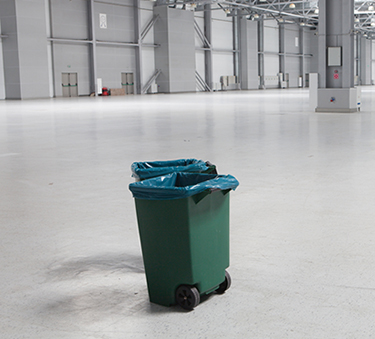 Start a Warehouse Recycling Program
Start a Warehouse Recycling Program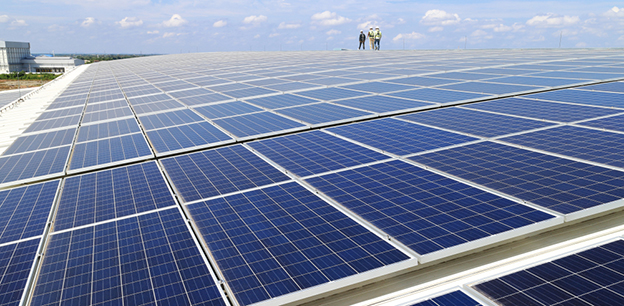
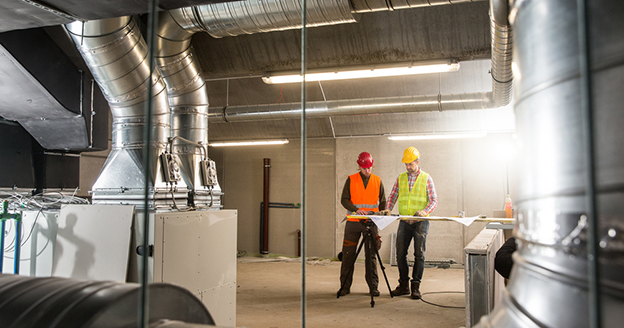
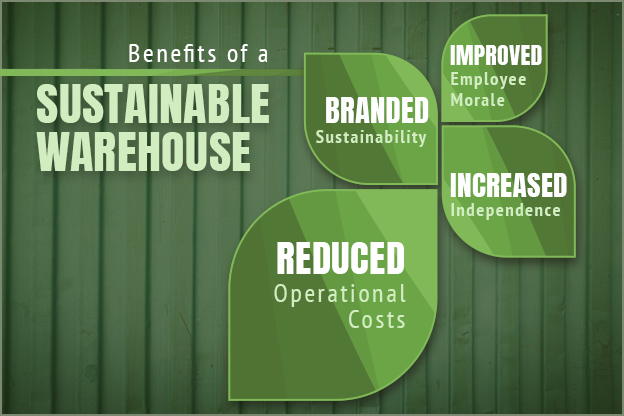
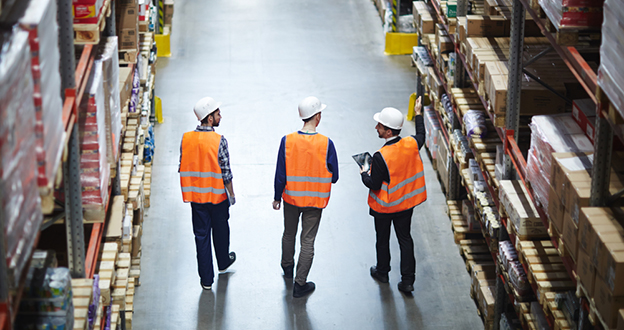
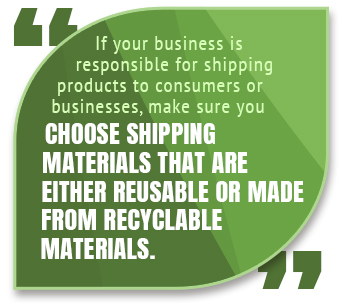 Choose Reusable/Recyclable Packaging Materials
Choose Reusable/Recyclable Packaging Materials